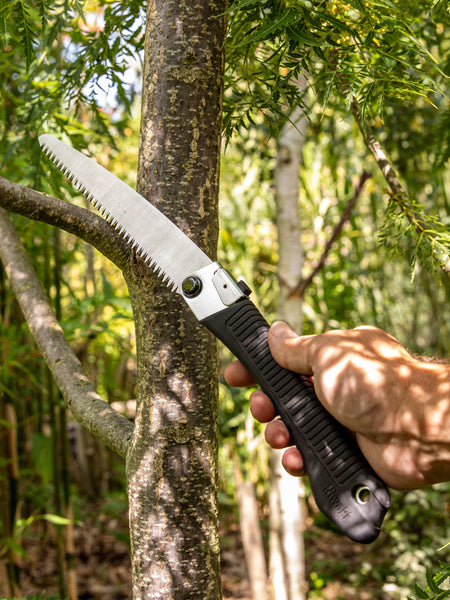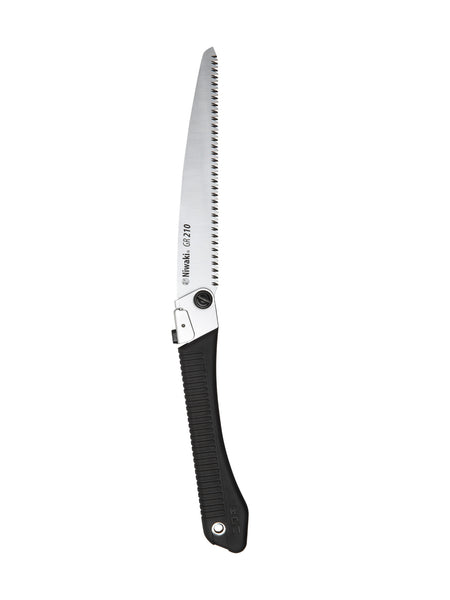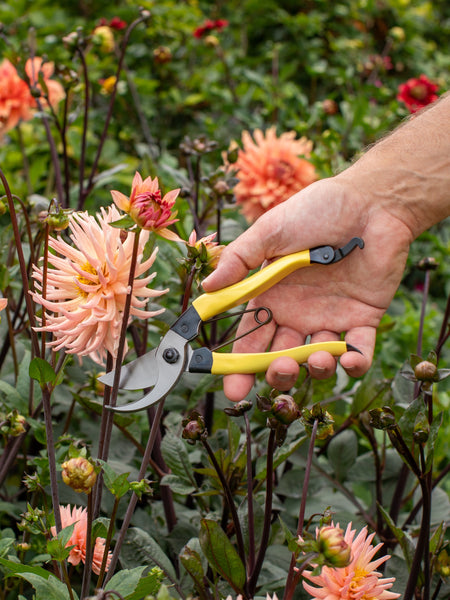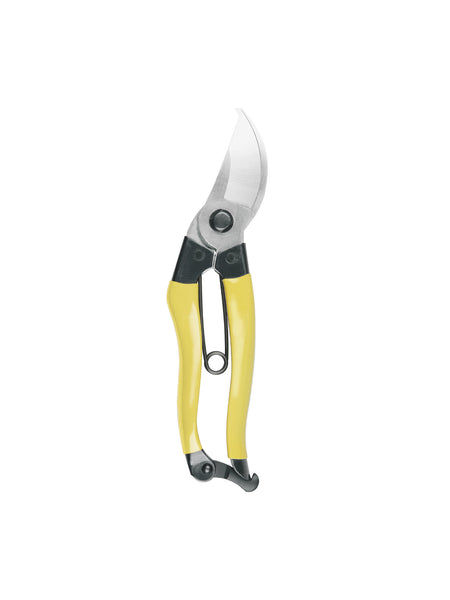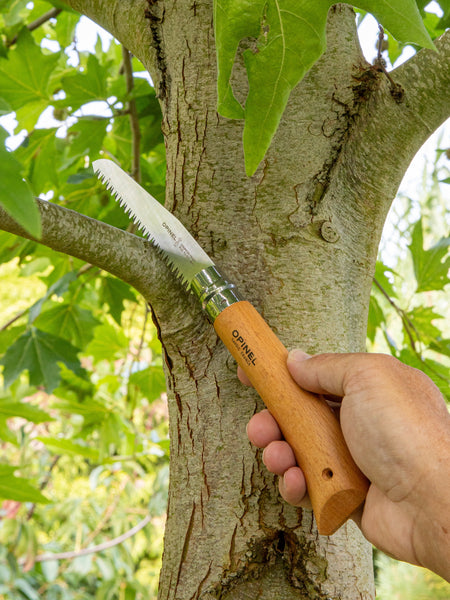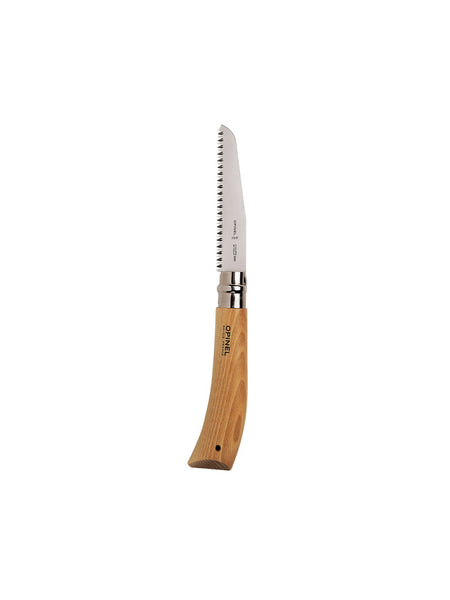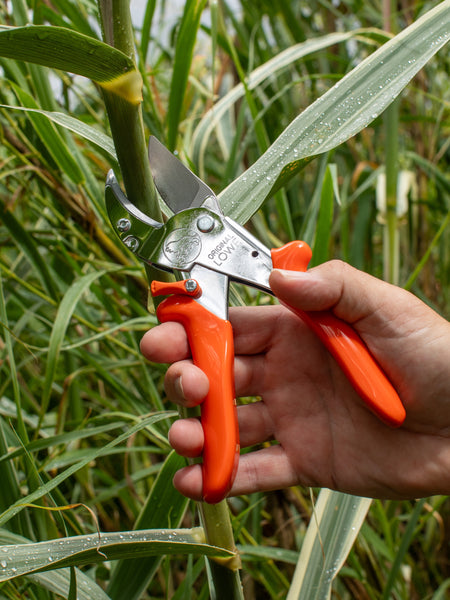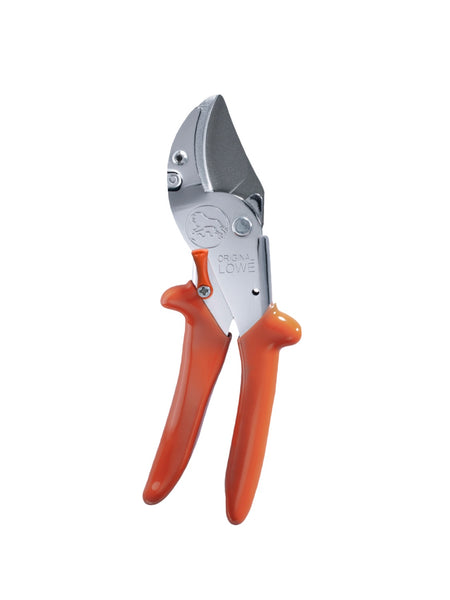Winter is the perfect time to prune many familiar garden plants, and despite what you might think, it's simple when you know how and have the right tools on hand.
Most trees and shrubs grow very slowly or not at all between December and early March. When they're dormant, there is less likelihood of woody plants bleeding sap and becoming infected by diseases when you prune them. When leafless, it's easier to see what growth needs to be removed to create a pleasing shape or keep a plant within bounds. Correct pruning will also help your plants remain healthy, vigorous and productive.
Where do I start?
Cutting into any plant can feel daunting, even destructive, but in most cases, it should be good for them and enjoyable for you. This article covers all the basics, listing which plants to tackle in winter and which to leave well alone.
If you're ever in doubt, equip yourself with a good pruning book: they can be picked up for a couple of pounds in a charity bookshop. The pages will be packed with sound advice and useful diagrams. One I recommend is the RHS book of Pruning and Training. Many horticultural organisations offer pruning courses run by experts if you want to extend your knowledge further or prefer to learn 'hands-on'.
You'll find links to related posts at the end of this article.
What should I prune in winter?
Not all plants can be pruned in winter, but here's a list of those that will benefit:
- Roses - bush roses, such as floribundas and hybrid teas, can be cut to between 15cm and 30cm above ground in late winter or early spring. Remove older stems of climbers and shrub roses, plus any dead, straggly or crossing branches. Tie the remaining growth to supporting structures.
- Deciduous shrubs and fruit bushes - Winter is a good time to open up and reduce the bulk of shrubs by cutting out dead wood and congested branches. It's also the best time to reduce their size, trimming excess growth to an outward-facing bud. Don't go crazy—step back and assess your progress occasionally. Your aim is to create an open vase or goblet shape.
- Apple and pear trees benefit from pruning to encourage more flowers and fruit. Cut long and unbranched stems back to produce short spurs around the main branches. These will produce flowers in a few months. Aim to remove no more than 10-20% of the tree; otherwise, you might send it into overdrive and encourage too much leaf production.
- Grapes, figs, acers, and birches are prone to bleeding if pruned at any other time. Tidying them in December or January ensures that wounds heal nicely. Prune vines back to the main structural stems, leaving short spurs from which new growth will shoot in spring.
- Wisteria benefits from being trimmed once in summer and again in winter. To extend the plant along a wall or over a pergola, tie in any wandering stems you want to keep, and remove the remaining growth to two or three buds from the main branch.
- Clematis need to be treated differently depending on when they flower. Winter is the correct time to prune mid and late-summer flowering clematis (Group 3, including C. texensis and C. viticella cultivars). You can be fairly brutal, removing all the top growth to about 30cm. Chances are that new buds will already be visible when you get around to this satisfying job. You can use shears on larger plants or if you have lots of clematis to prune.
- Autumn-fruiting raspberries can be trimmed almost to ground level. The next fruit crop will be produced on new stems ('canes') that emerge from the soil in spring.
Whenever possible, prune on a mild, dry day. This will be more comfortable for you and help prevent the spread of water-borne diseases. It's also safer if you use a ladder as there is less chance of it slipping. Avoid pruning when frosts are predicted shortly afterwards, as this can stress plants and slow the healing process. If you are pruning many plants of the same variety, dip the blades of your pruning tools in dilute bleach after each one to kill any bacteria.

These shrub roses have been reduced to 2 or 3 main stems with their side branches neatly pruned above an outward-facing bud.
What not to prune in winter
- Don't touch stone fruit trees, including cherries, plums, damsons, apricots and peaches. Pruning in winter can spread disease, so wait until early or mid-summer.
- Leave rambling roses alone until late summer unless they have become completely out of control and need serious tidying up.
- Leave willows, hazels and dogwoods with colourful bark or spring catkins until their moment of glory is over.
- Hold fire on hydrangeas, salvias, fuchsias and other less-hardy shrubs until early spring, as old growth will offer tender buds protection from the winter cold.
- Winter, spring and early summer-flowering clematis should be tidied after flowering in late summer or autumn. Pruning in winter may remove the next season's flowering stems.
- The same advice applies to early-flowering shrubs that are already forming buds in readiness for spring. These include lilacs, forsythias, magnolias, deutzias, ribes, rhododendrons and azaleas.
- Summer-fruiting raspberries produce fruit on the previous year's canes, so don't be tempted to remove these.

What tools do I need?
You probably have at least one pair of secateurs in your tool shed. These can be used to prune stems and branches from a couple of millimetres thick, up to 3cm, depending on which type they are:
Bypass secateurs - these cut using a scissoring action as one blade passes another. Bypass secateurs are best for cutting 'green' wood that's still sappy and pliable. Depending on the model and the plant material you are pruning, they should comfortably cut through branches up to 1.5cm thick.
Anvil secateurs - these cut using an action similar to a knife on a chopping board, with a sharp blade bearing down on a flat surface, known as the anvil. Anvil secateurs are ideal for cutting 'brown' wood that's dry and rigid - they'll cut through 'green' wood too, but their superpower is their ability to cut smoothly through branches up to 3cm thick.
It's a good idea to have one pair of each type of secateur if you have a variety of plants to prune in your garden. For more information about the different types of secateur, click here.
Once you get beyond a thickness of 3cm, you will need a pruning saw. These thin, tapered blades are designed to get between branches and produce a clean cut. They don't require as much effort as a conventional saw, but mind your fingers, as they're ferociously sharp. Depending on the model, a pruning saw should comfortably cut through branches up to 10cm thick.
Loppers are handy if you are pruning taller plants with hard-to-reach branches, but do not over-stretch and protect your eyes if you are cutting overhead. Most loppers use a bypass mechanism and should be able to cut through a branch in one smooth motion. If you're struggling, you probably need to upgrade to a pruning or powered saw.
Simple Pruning Tips
Pruning is a skill that even experienced gardeners never stop learning. Done poorly, it can do more harm than good, but if you follow a few simple rules, doing something is almost always better than doing nothing.
- Use the right tool for the job - if you're straining or stretching, that's not a good sign. For more advice on equipment, read How To Prune Like A Pro.
- Ensure secateurs, loppers and shears are clean and sharp before you start.
- Always know where your fingers are in relation to the blades - enough said!
- Make clean cuts so the plant is not bruised, torn or grazed.
- Remove dead, diseased, weak, snagged or damaged branches first.
- If other branches cross one another, remove one or both of them to prevent them from rubbing together.
- Cut 1cm above an outward-facing bud, at the fork of a branch or just beyond the branch collar (the swelling where a branch joins a main stem or trunk). This ensures that the plant's energy is channelled toward a new growth point.
- Cut at an angle so water or sap cannot stagnate on the cut surface.
- Mulch heavily pruned plants to help them recover when growth resumes.
- If you cut into wood with no visible leaves, buds or shoots, be sure that the plant can rejuvenate itself. Several plants, including most conifers and woody shrubs like lavender, will not reshoot from 'old wood'.

Disposing of Your Prunings
Pruning can create a lot of plant material for you to dispose of. Burning it isn't always feasible, and green waste bins are quickly filled. Here are a few alternative ideas for making good use of your trimmings:
- Bundle up long, straight branches to support climbing plants. Hazel and chestnut poles are especially useful for creating frames for vigorous climbers such as beans, sweet peas, clematis, and cobaea.
- Keep short or twiggy branches for supporting perennials that tend to flop in summer, such as peonies and phlox.
- Use thorn-covered holly, blackberry and rose sprigs to protect bulbs planted in pots from marauding squirrels. Lay them on top of the compost for the best effect.
- If you have a chipper or know someone who will lend you theirs, turn excess prunings into bark mulch. This can be distributed around plants or added to your compost heap between layers of green material, such as grass clippings. Bark chippings also make a good temporary surface for muddy paths.
- Cut dry branches into convenient lengths to burn in a woodburning stove. Avoid any wood with resinous sap, such as pine, fir and spruce, as this may clog your flue.
- Pile thick logs in a quiet, shady corner of the garden to create a home for insects and moss. Accompanied by a mound of leaves, you might even attract hedgehogs.
- Bind together small twigs and hollow stems to create an insect hotel that can be tucked into a wall or hidden under the eaves, where it will be sheltered from the elements.

